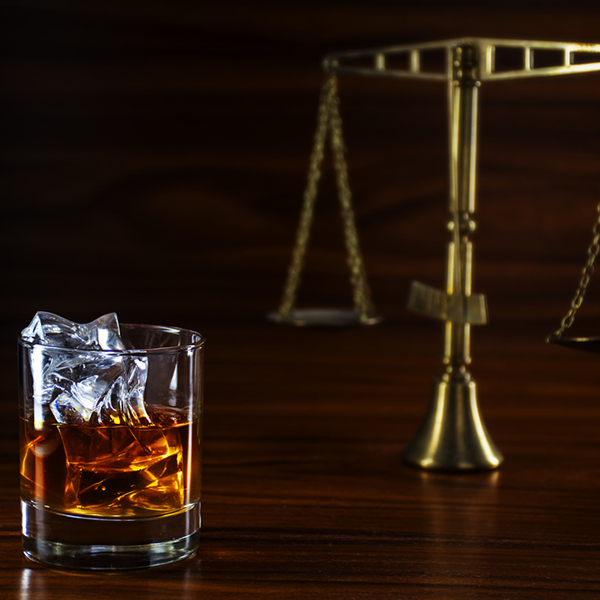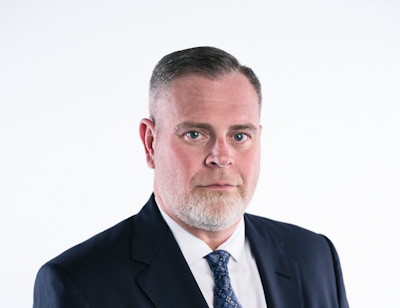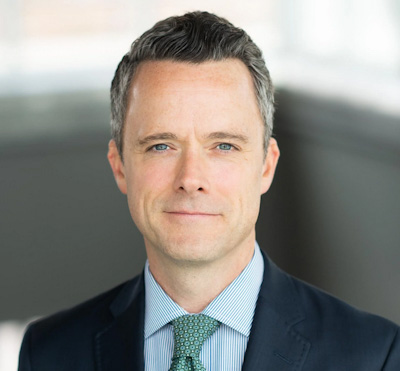Under Pressure: Understanding alcohol addiction in the legal profession

Jennifer Anderson, a legal consultant, a ghostwriter and a former, says gray area drinkers and functional alcoholics are easy to spot within the legal community. "They are the ones who are constantly rallying the troops to go out for drinks after work,” she says. (Image from Shutterstock)
Chad Pinkerton was 12 years old when he had his first alcoholic drink. By the time that he was a senior in high school, he says, he was abusing alcohol. And by his late 20s, he was a full-blown alcoholic.
Just before starting law school in 2001, Pinkerton got pancreatitis and was told that he had to stop drinking or he would die. He stopped for two years.
During his third year of law school, Pinkerton resumed drinking to deal with the stress of school and with the conflicts in his new marriage.
“I was drinking extremely heavily,” Pinkerton says. “I had 10 to 12 drinks per day, four days a week.”
Despite his heavy drinking schedule, Pinkerton graduated third in his law school class at the University of Houston Law Center in Texas, and in 2004, he started working at Ware, Snow, Fogel & Jackson (now known as Ware, Jackson, Lee, O’Neill, Smith & Barrow).
“It’s very acceptable to drink in the practice of law,” says Pinkerton, who’s now a personal injury attorney in Houston. “You get together after a case, and you drink. This particular firm worked very hard and played very hard.”
It’s no secret that lawyers have a high rate of problem drinking. According to data from the ABA, “as many as one in five lawyers is a problem drinker—twice the national rate.”
 “I’ve always been able to focus and grind when it was necessary,” says Texas lawyer Chad Pinkerton. “I would work when I needed to work, but when I was off, I would drink with the partners.”
“I’ve always been able to focus and grind when it was necessary,” says Texas lawyer Chad Pinkerton. “I would work when I needed to work, but when I was off, I would drink with the partners.”
These drinkers are able to keep their jobs because they’re considered to be either gray area drinkers or functional alcoholics. The former display early signs of an alcohol use disorder, while the latter appear to be somewhat in control of their drinking.
“I’ve always been able to focus and grind when it was necessary,” Pinkerton explains. “I would work when I needed to work, but when I was off, I would drink with the partners.”
Others aren’t so sure that gray area drinkers or functional alcoholics are able to function as well as they think.
Jennifer Anderson, a legal consultant, a ghostwriter and a former attorney on Vashon Island in Puget Sound—west of Seattle—says gray area drinkers and functional alcoholics are easy to spot within the legal community.
“They are the ones who are constantly rallying the troops to go out for drinks after work,” she says. “Once there, they tend to drink more and drink faster than their colleagues.”
In larger law firms, Anderson says, you may see attorneys who are otherwise introverted sign up for social events with interns and summer associates, as the events associated with recruiting tend to be fueled by alcohol.
In the morning, their eyes are swollen, they’re chugging water, and their thoughts are foggy. Anderson says she used to hear the managing partner of a small firm loudly vomiting in the restroom nearly every morning.
For years, Anderson told herself that this level of drinking went hand in hand with a legal career.
“I told myself for years that it was just a part of the job,” she says. “I knew so many people who drank too much too often. Being a lawyer is a stressful job—alcohol is a way to relieve some of the pressure.”
Patrick Krill, a co-author of a 2021 study on the link between lawyers, mental illness and alcohol use, doubts that gray area drinkers or functional alcoholics are actually operative.
“I view the term ‘functional alcoholism’ as a myth—a lie we like to tell ourselves in the face of nagging doubt about our or someone else’s drinking,” says Krill, founder and principal at Krill Strategies, a Pittsburgh-based behavioral health consulting company exclusively for the legal profession that helps reduce the effects on attorney mental health and substance abuse.
 “I view the term ‘functional alcoholism’ as a myth—a lie we like to tell ourselves in the face of nagging doubt about our or someone else’s drinking,” says Patrick Krill, founder and principal at Krill Strategies. (Photo by Bethany Jackson)
“I view the term ‘functional alcoholism’ as a myth—a lie we like to tell ourselves in the face of nagging doubt about our or someone else’s drinking,” says Patrick Krill, founder and principal at Krill Strategies. (Photo by Bethany Jackson)
No harm done?
Todd Kinney, an attorney in Omaha, Nebraska, who considered himself to be a gray area drinker until he quit in 2019, thinks that gray area drinking is never truly harmless. But for some people, the negatives that come with it aren’t enough to prompt a change.
Kinney usually constricted his drinking to weekends and social events, comparing his habits to a lot of suburban, professional dads, though on the inside, he says he had a tortured relationship with alcohol.
Drinking for him was the main attraction—the main event. When he wasn’t drinking or recovering from drinking, he was thinking about the next time that he would be drinking.
Finally, in 2019, after looking at his last six years of drinking, he says he finally quit, starting with a 90-day break and then committing to a six-month break. He extended the time again and again until he says he was committed for life.
“The negatives of drinking began to outweigh the positives,” Kinney says. “There were too many benefits of quitting to ignore.”
Functional alcoholism was also getting trickier for Pinkerton, who was now drinking his way through law school and also through dozens of trials. Pinkerton was becoming irritable, and he started struggling not to drink every day.
Things took a nosedive for Pinkerton while on a business trip to Florida with his boss at the time. On the plane, Pinkerton drank an entire bottle of vodka, and he got close to having a fist fight with his boss, who didn’t think that Pinkerton was prepared for his deposition. His boss sent him home early, and Pinkerton checked into rehab, managing to stay sober for 10 months.
Pinkerton then decided to start a firm—he’s the founder of the Pinkerton Law Firm. But after settling his first big case at his firm for $1.8 million, Pinkerton drank 14 Whiskey and Cokes, and he proceeded to fall down a flight of stairs.
“That was the beginning of the end,” says Pinkerton, who returned to rehab and says he has been sober for 16 years.
Anderson, too, says she was able to quit drinking, thanks to naltrexone, a medicine that blocks the highs that come with consumption.
Law post-drinking
While the legal field is rife with alcoholic lawyers, the lawyers who spoke to the ABA Journal say they had a better relationship with their work once they stopped drinking.
Pinkerton says while he’s still an aggressive, demanding person, he constantly reminds himself of his family, his faith and his integrity, which helps keep him from drinking alcohol.
“My life is exponentially better without alcohol, and I do all the same things and I have fun,” Pinkerton says.
According to a study of 2,002 former alcoholics and drug abusers by the Recovery Research Institute with data derived from the National Recovery Study, the first year of sobriety tends to include initial stability followed by drops in happiness. But steep increases in well-being happen during the first six years of recovery, which continue over 40 years.
For other lawyers struggling with alcohol, there’s help. The ABA Commission on Lawyer Assistance Programs offers support in all states specifically for lawyers who want to stop drinking.
If you’re not sure whether you have a problem, Pinkerton suggests self-reflecting and examining how it’s affecting your work and personal life. He also says when you’re ready, you’ll have to find a program for help.
“I’m one of the strongest individuals on the face of the earth, and I wasn’t able to help myself,” he says. “The only thing that helped me was seeking help.”



